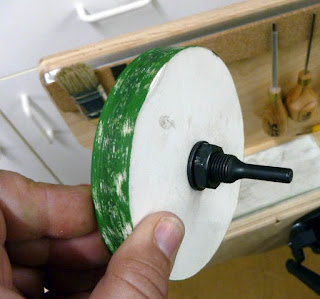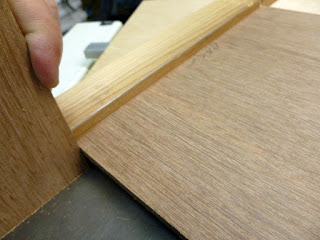 |
| photo copyright Karin Corbin 2012 |
More work done today on my new carving stand including a way to power hone my tools for those scary sharp edges that cut wood as if it were butter.
My carving stand was built using a "hide-a-horse", lightweight (7lbs) folding saw horse. I love it, it sets up in seconds but folds up into a very small package easy to store under a bed or in a closet.
Watch the video on this link to see how it works http://hideahorsefoldingsawhorses.com/
I put a layer of thin adhesive backed cork sheeting over the magnetic, stainless steel knife bar. I purchased the bar from my local Ikea store but they can also be found on Amazon or Ebay. The length of the bar is what determined the size of my carving stand. I like the stand to be that long because it keeps the C clamps that attach the stand to the sawhorse, desk or table top from hitting my knees. Also it gives me lots of room for hanging up carving tools. The cork sheeting is shelf liner from the Contact brand. You can find it in hardware, home center stores and places such as Walmart.
 |
| photo copyright Karin Corbin 2012 |
Another chore today was mounting a honing disk onto a mandrel so I could use it in my battery powered drill motor. This kind of mandrel can be found in hardware stores. The honing wheel is made by gluing layers of mat board together. Be sure to carefully cut the circles so you don't have to do a lot of sanding to true up the disk surface after the glue is dry. Use the motor turning against a sanding block. But to get that chore done even faster turn it with the drill motor against a running power sander.
 |
| Add captionphoto copyright Karin Corbin 2012 |






























